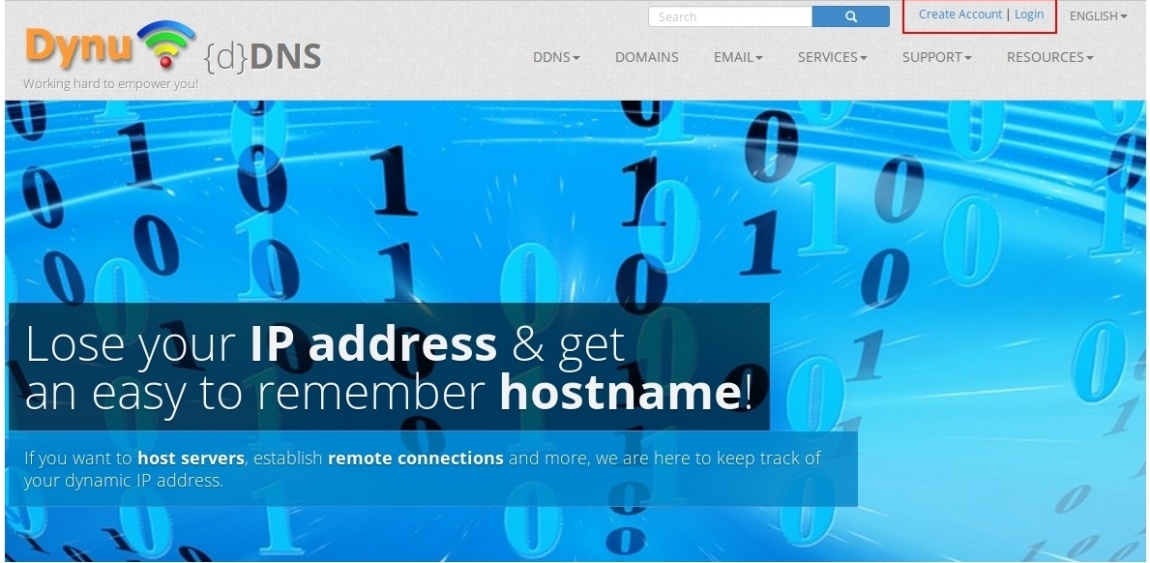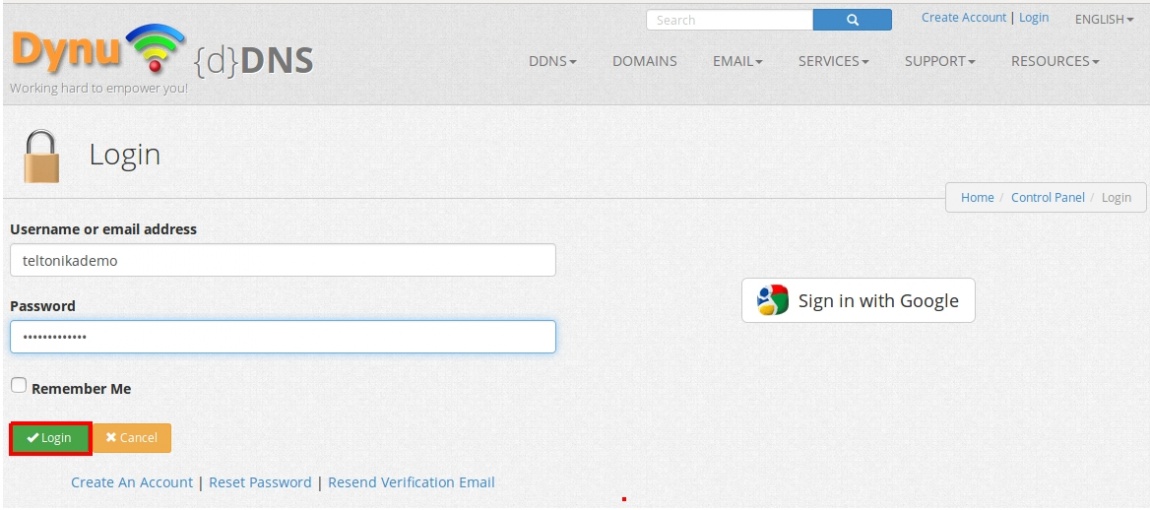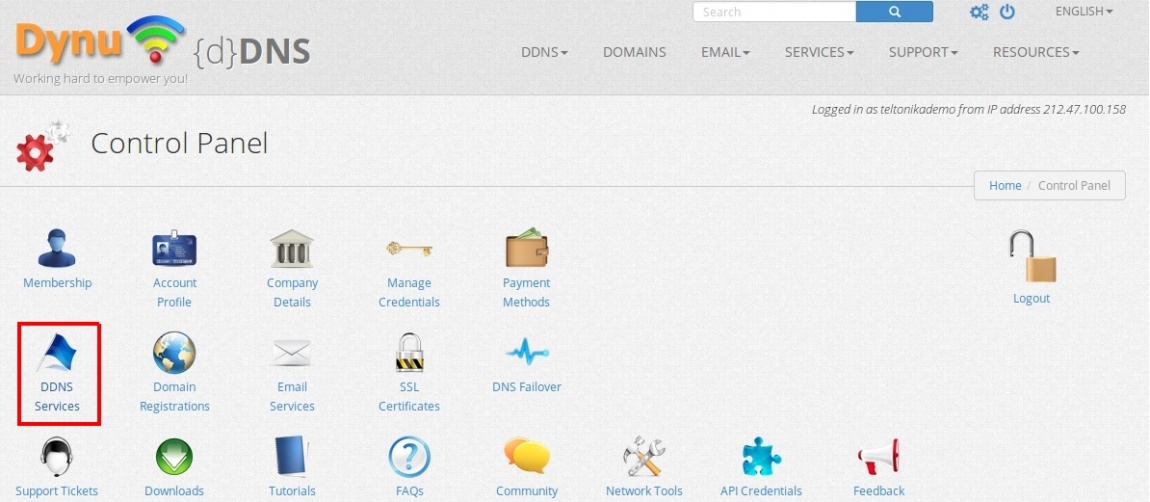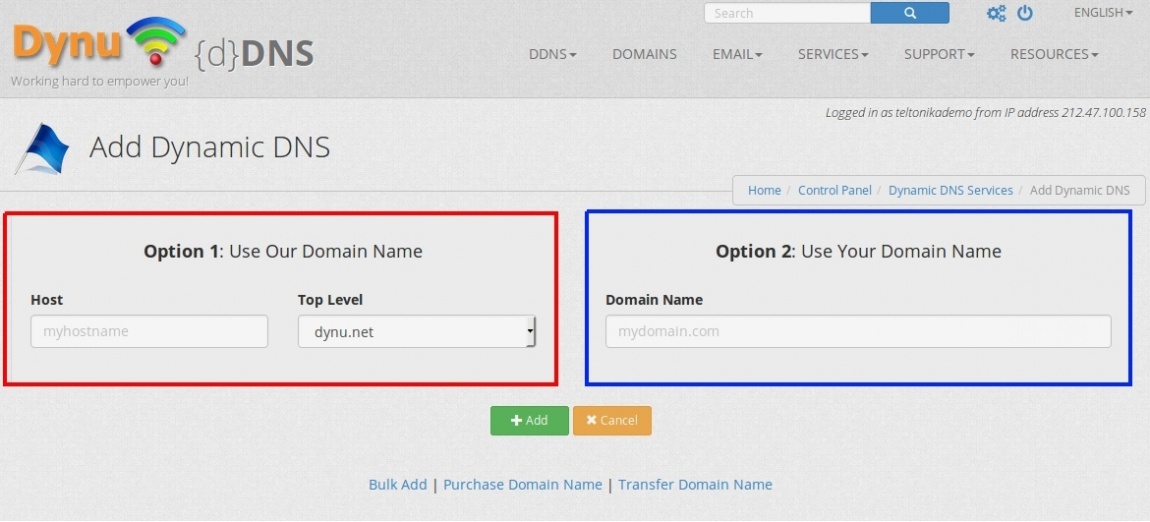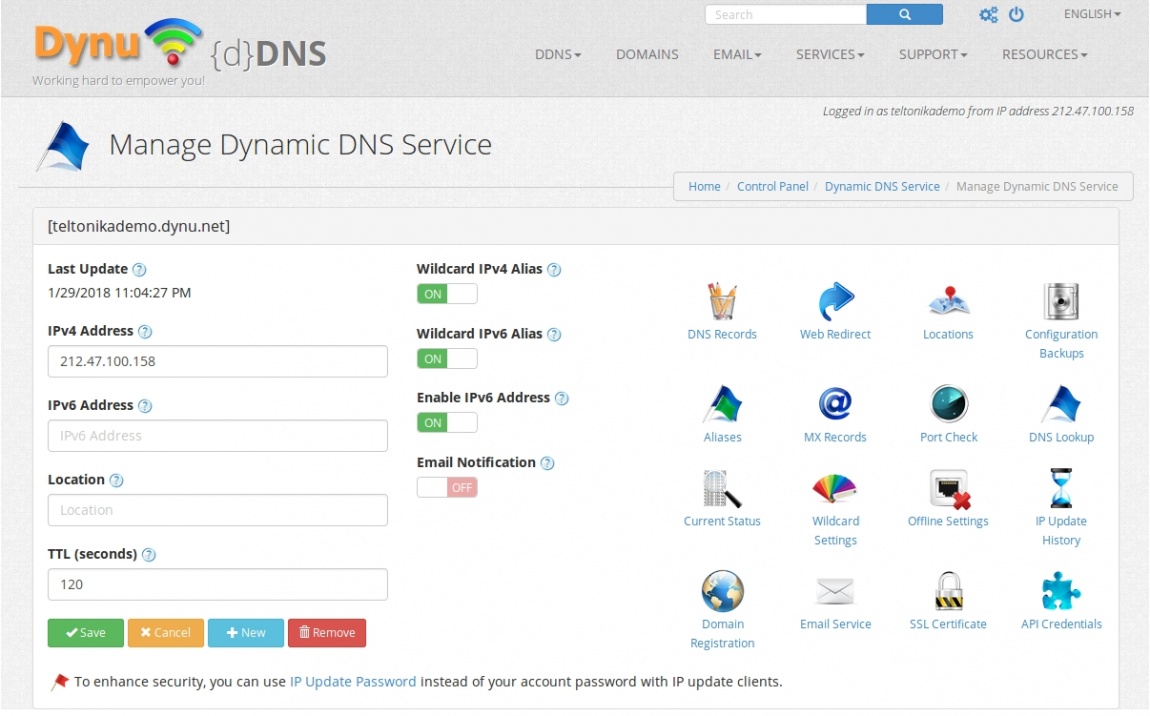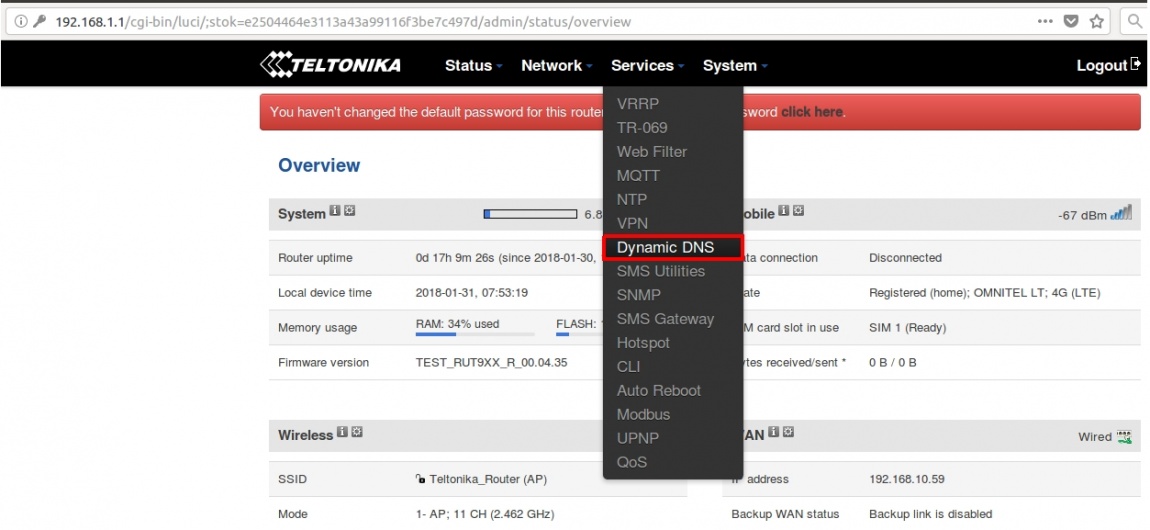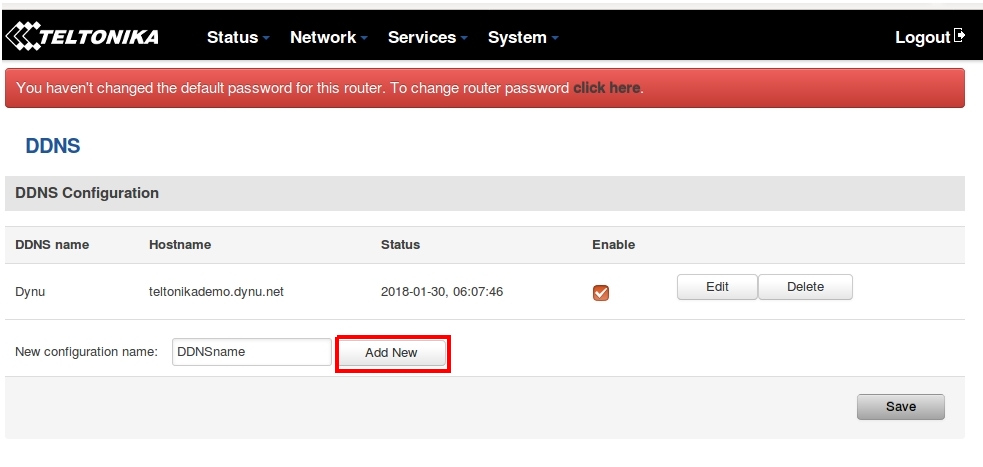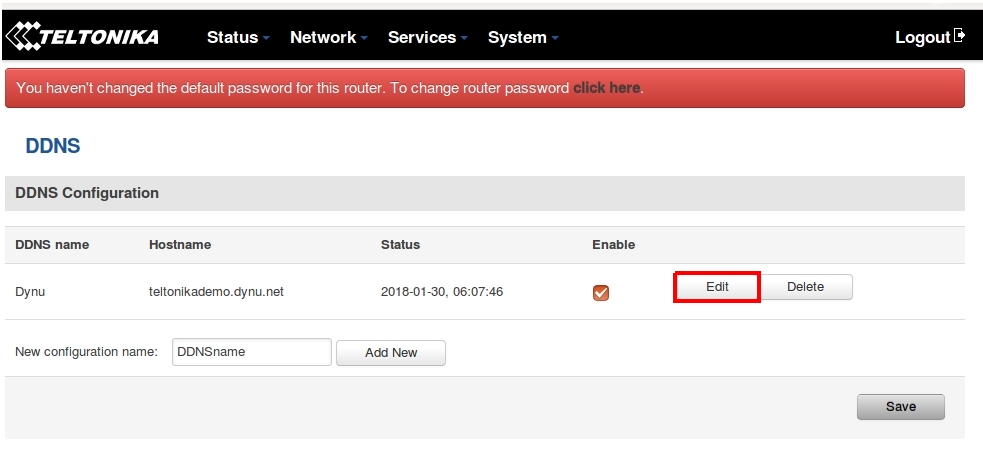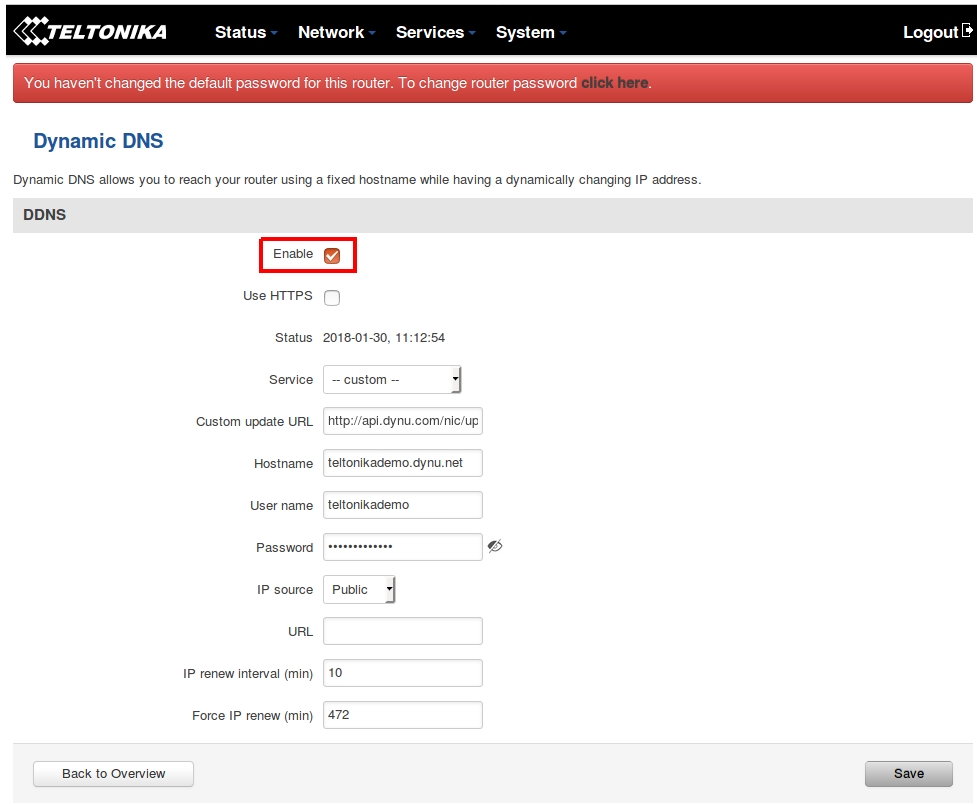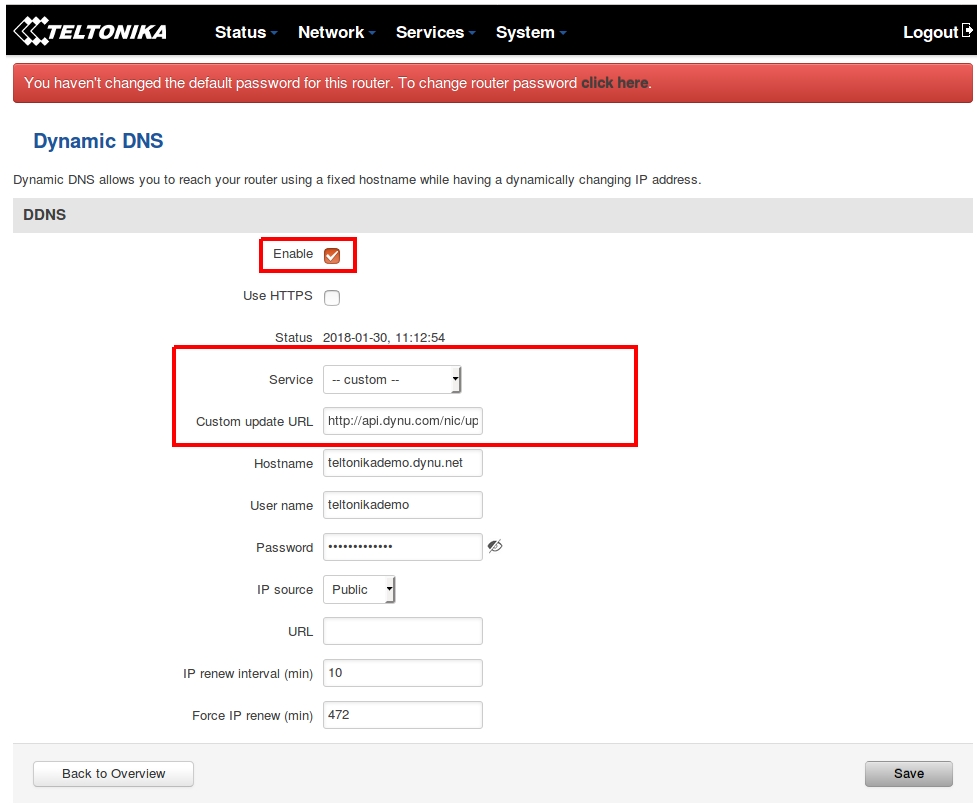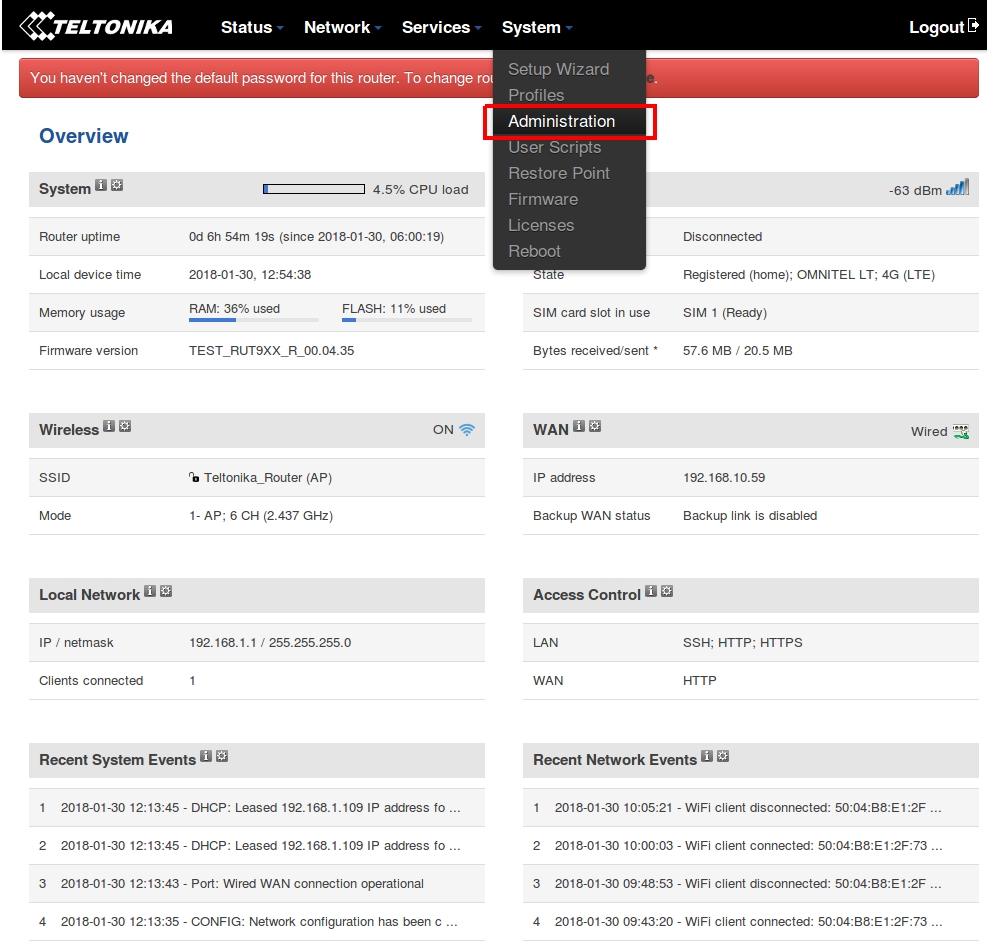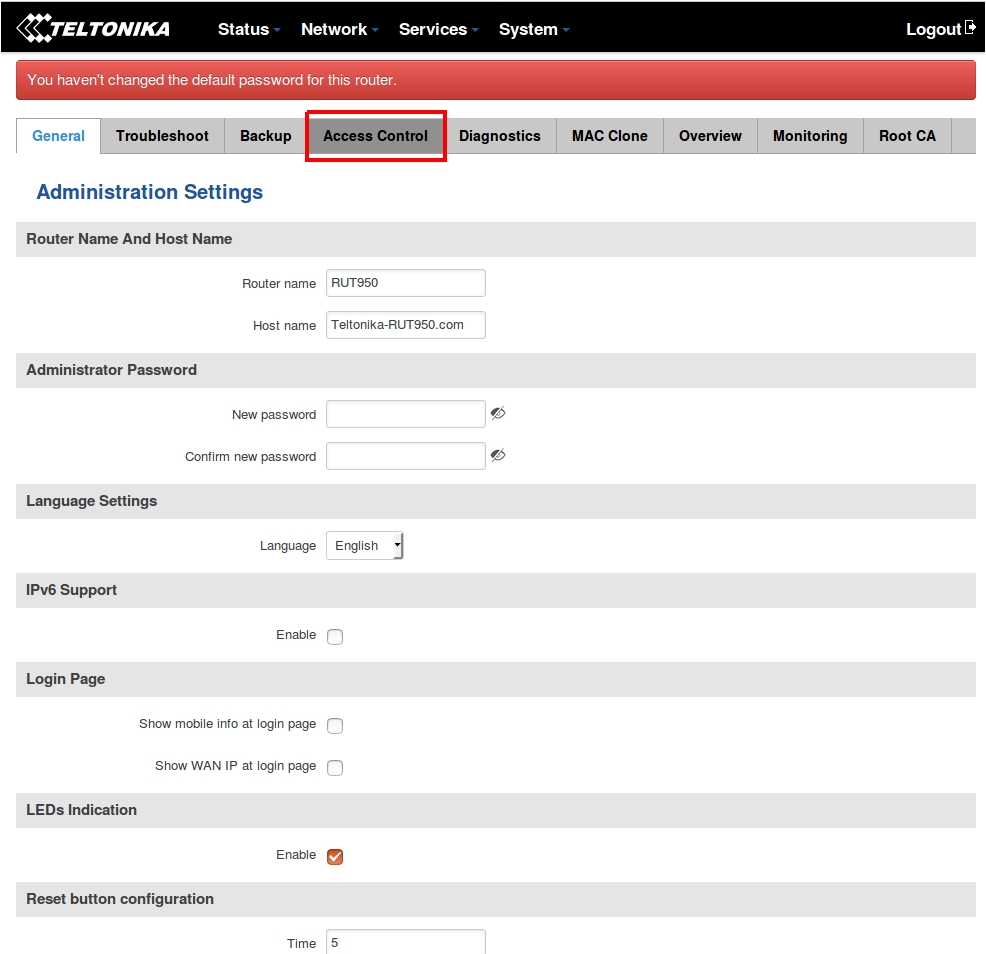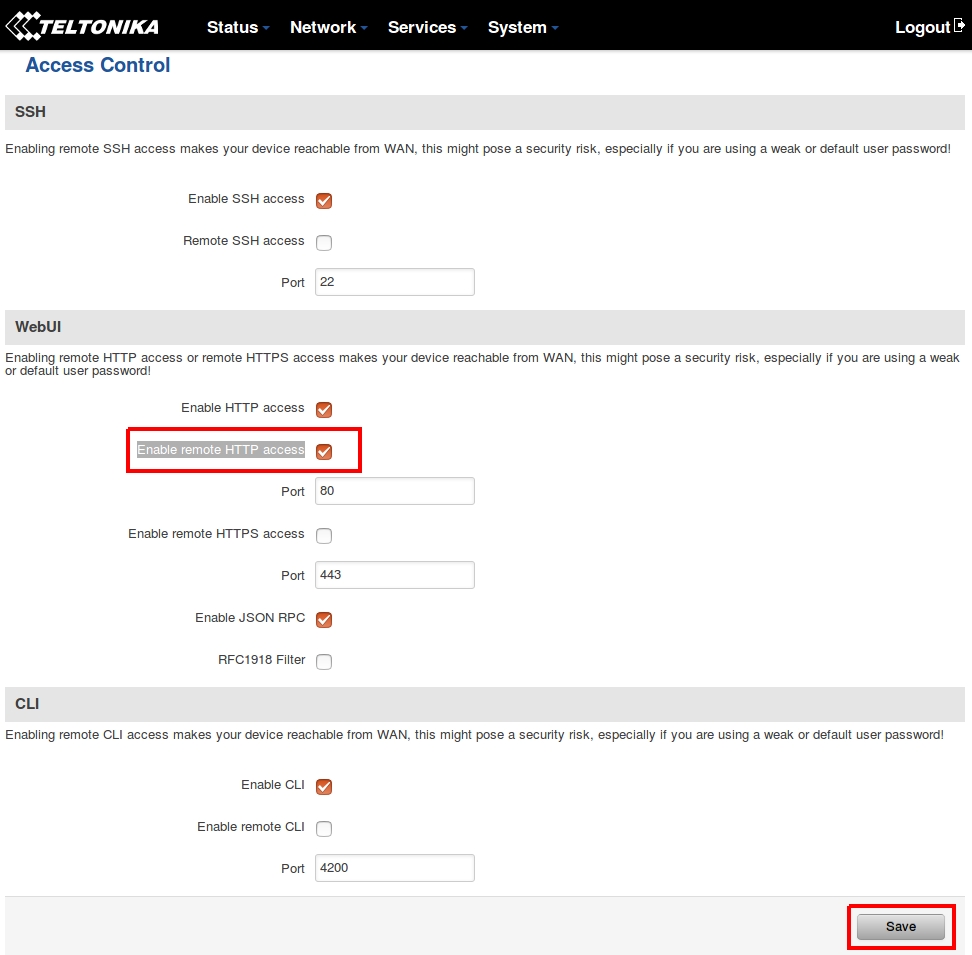Dynu.com DDNS configuration
Preconditions
There is one mandatory precondition for DDNS to work - you must have a Static or Dynamic Public IP address. Dynamic DNS will not work with a Shared Public IP. You can read up more on this in our article on Private and Public IP Addresses.
The easiest way to find out this information is to log in to the router's WebUI and check the WAN widget in the Overview page. You will be automatically redirected to the Overview page after you log in and the WAN widget will be on the right side of the page, second widget from the top. If the WAN widget displays a Public IP address, your DDNS configuration should work; if it displays a Private IP address, that means you're using a Shared Public IP address and you won't be able to reach your router with the help of DDNS.
Step 1. Dynu DDNS configuration
First of all we need to visit DDNS provider website - https://www.dynu.com, once we are here we have two options: create new user or use existing one.
If you do not have existing account click "Create Account"
To login into your account click "Login"
Enter your account details and press "Login"
Adding new host
You need to click "DDNS services"
Then "Add"
And finally you need to choose one of two options to use their domain name (red square) or your personal domain name (blue square) and click "Add"
After all these steps you should see this window
Step 2. Router configuration
To configure the router we need to enter the router's WebUI. To access it enter your router IP (eg. 192.168.1.1), into your web browser's URL bar. After that you should click "Dynamic DNS": Services -> Dynamic DNS
Then enter new configuration name and click Add new
After that you will see new line with two options "Delete" and "Edit". Click Edit
Dynamic DNS configuration
Once you have completed all steps before you will see window with important DDNS configuration settings. First of all, check "Enable" box
Next, you need to select service provider: Service, however our routers do not have Dynu as default provider, so you have to select custom.
After that it is important to create good "Custom update URL". It should look like this:
http://api.dynu.com/nic/update?hostname=[DOMAIN]&myip=[IP]&username=[USERNAME]&password=[PASSWORD]
DOMAIN -> your registered domain eg. teltonikademo.dynu.net
IP -> your IP address eg. 214.154.12.47
USERNAME -> your Dynu account username eg. teltonikademo
PASSWORD -> your Dynu account password eg. yourpassword
IMPORTANT use hash methods that covers your password for security reasons. You can do that here
Complete URL example: http://api.dynu.com/nic/update?hostname=teltonikademo.dynu.net&myip=212.47.100.158&username=teltonikademo&password=28c7e9d80022be6f5c801cc9a7d0e13ee1647579df1f4911c7cfb6f0cca323f3
Once you created URL you need to fill in last three fields:
Hostname -> your registered domain eg. teltonikademo.dynu.net
Username -> your Dynu account username eg. teltonikademo
Password -> your Dynu account password eg. yourpassword
And click "Save"
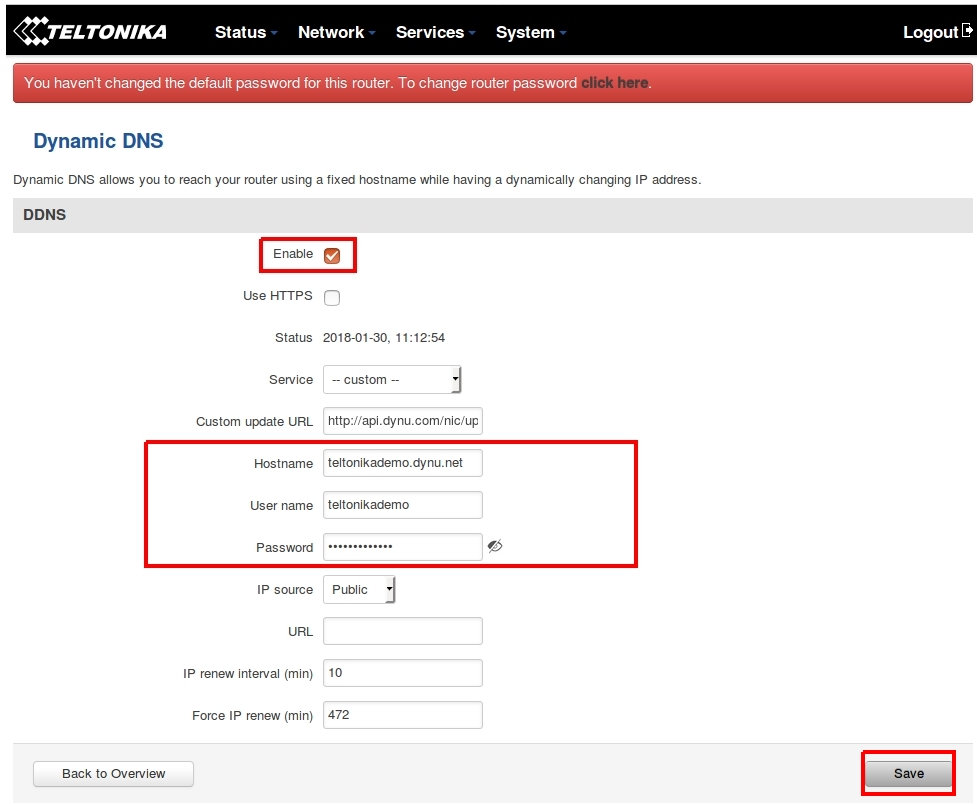
Remote access configuration
After you complete DDNS configuration last thing you need to do is to allow Remote access using HTTP. These options can be found System -> Administration -> Access control
And then click "Access Control" tab
Here you need to select "Enable remote HTTP access" option and press Save
Test your DDNS
Enter your hostname into browser and you should see something similar
See also
Dynamic_DNS - general information on the DDNS service.
DDNS Configuration Examples - additional examples for different DDNS providers.


